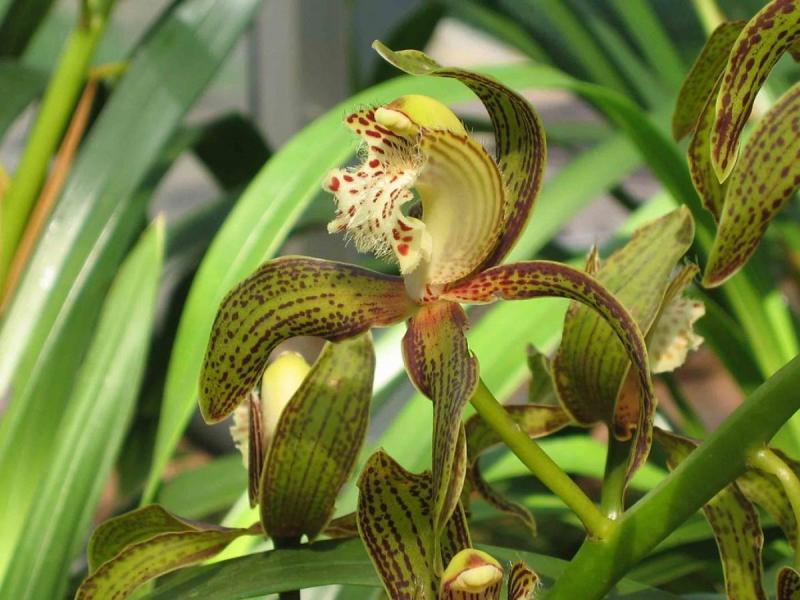Cymbidium tracyanum
Also known as: Tracy's Cymbidium or Cymbidium tracyanum h.f. album Cyperorchis tracyana Cymbidium zaleskianum Cymbidium traceyanum In Thailand Ueang dinn noe - Phisuea - Ueang chat- Kare karawn khao in the subfamily: Epidendroideae
Native to: China Thailand
General Information
Tracy's Cymbidium is a large cool to warm growing epiphytic or lithophytic orchid belonging to the sub family Epidendroideae native to China and Thailand. It is named after the English Orchid Grower in the 19th century and first to flower species.
Plant Description
Grows to 65-90cm. Each new growth has numerous elliptic leaves that grow to 2-90cm long. Pseudobulbs grow to 2.5-15cm
Flowers
Numerous long lasting, fragrant blossoms appear
Fragrance
The orchid is fragrant.
Substrate(s)
- Coarse
- Medium
- Small
- Fine
- Bark
- Charcoal
- Treefern
- Spaghnum Moss
- Perlite
- Sand
Care Notes
This orchid goes into a dormancy phase during winter, during this phase it is best not to provide water unless the plant is starting to look thirsty. The lack of water increases the chance of flowering in spring, and also reduces the likelihood of any rot forming. Do not resume watering until new growth has appeared and is growing strongly.
Often a period of intense growth occurs after dormancy. During this time the amount of light, water and fertiliser the plant receives will directly impact the amount of growth that occurs during this time, and in the case of seedlings, will reduce the time required to reach maturity.
It's recommended to heavily reduce the water amount at the middle to end of autumn to trigger dormancy. Leaves on older bulbs will begin to drop during this time while the newer bulbs continue to mature until terminal leaves appear at the tip of the pseudobulbs.
Repotting can be done any time of the year though it's best to do it in early spring when new growth is appearing as this also means new roots will appear to help the plant anchor into the new media and offset any damage to established roots during the repotting process.
Fragrant:
- IsFragrant
Climate
Grows at high elevations. Rainfall ranges from 0mm to 284mm per day, heaviest in July and lightest in January. Humidity ranges from 44% to 80%, highest in August and lowest in April. Temperature ranges from 6C to 29C, highest in April (17C to 29C) and lowest in January (6C to 20C).
Fertiliser
dormant-medium-demand-orchid Be sure to flush out excess fertiliser by running water through the media regularly year round. Fertiliser can be applied heavily year round. Apply fertiliser regularly at half strength year round. Use a low Nitrogen fertiliser during Summer and Winter. Use a high Phosphorous fertiliser during Summer and Winter.
Potting
It's best to observe the root system when repotting and use that as a guide:
A plant with a short root system will do better in a shallower pot with a fine mix, or mounted on fern or cork supplanted with a good amount of moss or similar material.
A plant with a long root system often does well in a pot filled with moss or fine media, mixing in perlite and charcoal is always beneficial to reduce the likelihood of the mix becoming soggy and keeps it fresh.
A plant with a coarser long root system can be potted in a deeper pot, but with 2/3 coarse material such as bark, expanded clay, or coco chips and topped with moss or similar material. This will allow the moisture to remain inside the pot but give the roots air as well.
Repotting is best done annually.




















